ishtartv.com - foxnews.com
By Hollie McKay
MANBIJ,
Syria – For more than two years, ISIS forces who occupied this northern
Syrian city paid little attention to the tip of an old gate on an empty mound
of land where they dumped trash.
They
were clueless the gate ran several feet into the ground down to something they
might well have destroyed had they known: The ruins of an ancient Christian
refuge, or early church, possibly dating back to the first centuries of
Christendom’s existence, under the Roman Empire.
“I
was so excited, I can’t describe it. I was holding everything in my hands,”
Abdulwahab Sheko, head of the Exploration Committee at the Ruins Council in
Manbij, told Fox News, as he led a reporter on a recent tour of the ruins.
Among
the artifacts found that indicate this was a significant site for Christians
were several versions of crosses etched into columns and walls, and writings
carved into stone.
“This
place is so special. Here is where I think the security guard would stand at
the gate watching for any movement outside,” Sheko explained, working his way
through what he called the “first location” of the site. “He could warn the
others to exit through the other passage if they needed to flee.”
The
ancient space is carved out with narrow tunnels, complete with grooved shelves
to offer light, which were believed to offer passage for worshippers. There are
myriad escape routes in the tunnels as well, featuring large stones that may
have served as hidden doors. Also visible are three jagged steps leading up to
what Sheko believes was an altar of sorts.
The
discovery of a so-called "secret church," dating as far back as the
third or fourth century, A.D., could be an important find, according to a
leading American archaeologist.
“They
indicate that there was a significant Christian population in the area which
felt they needed to hide their activities,” said John Wineland, professor of
history and archaeology at Southeastern University. “This is probably an
indication of the persecution by the Roman government, which was common in the
period.”
Wineland
said Christians were persecuted “sporadically at first, and later more
systematically by the Roman government.” Christianity was illegal in the Roman
Empire until its worship was decriminalized by Emperor Constantine in 313 A.D.
Christians
of the time “met in secret, underground, to avoid trouble. But the Romans were
fearful of any group that met in secret,” said Wineland.
“The
Romans misunderstood many Christian practices and would often charge them with
crimes, such as cannibalism,” Wineland added. He said such charges stemmed from
the “Roman misunderstanding of Christian communion where Christ said to take
and eat His body and drink His blood.”
As
more of them are unearthed and studied, it’s not yet clear just how important a
find these new ruins might be.
Sheko
said he reached out to international archeologists and organizations since his
team began cleaning up the site last fall, and needs help identifying artifacts
and to “test the bones” of human remains found here. But the response from
abroad so far, he said, is that it is still too dangerous to send
archaeological teams to this part of a still devastatingly war-torn country.
Sheko
said he’s also hopeful the Vatican will “become aware of these discoveries,”
and will soon send someone to inspect the ruins.
The
site was fortunate to escape ISIS’s attention. Sheko said he was in the midst
of studying the neighborhood when the infamously Christian-hostile group
invaded in 2014. He managed to keep the secret of it quiet until ISIS was
driven out in a bloody offensive by the U.S.-backed Syrian Democratic Forces
(SDF) in 2016.
Due
to the area being riddled with mines and booby traps, extensive cleanup and
digging at the site couldn’t begin until late August last year. The excavation
produced enough by March for Sheko and his team to host “a festival” of sorts
for a handful of locals to come and visit.
In
fact, it was the locals who led the way to another, very recently discovered
“second location” ‒ which is still littered with insects, trash ‒ and even
a stray dog sleeping inside. Within this location, down 11 jagged stone steps
and into a cave that opens up into a multitude of rooms, overt Christian
symbols are everywhere, etched into the stone walls and across the arched
ceilings.
“We
think this place after Christianity was no longer a secret anymore,” explained
Sheko, gesturing to the symbols.
Wineland
agreed and said he believes that, based on the photographs shown to him by Fox
News, the crosses chiseled into the walls, along with geometric designs
consistent with the Roman era, appear to have been added later, after wider
acceptance of the Christian faith.
“That
is what we would call a secondary use of the tomb, and it might well have been
a Christian place of meeting or worship,” he said.
Further
into the subterranean maze is a “graveyard,” Sheko said, likely reserved for
the church clergy. Each tomb there bares an elevated “stone cushion” for the
head.
There
are still human remains inside the tombs. One local resident told Fox News he
comes to visit the ruins regularly and has actually touched human bones —
and watched them then “disintegrate” before his eyes.
The
cleanout process for this “second location” began in September 2017, requiring
seven men, digging tools and a forklift.
Sheko
said there are many more potential ruins that have yet to be unearthed, but
residential buildings above them makes excavation much more complicated.
For
now, the sites are guarded by a young, plainly dressed 21-year-old and his
AK-47. And outside of the nondescript Ruins Council office, precious
artifacts are simply being left on the street, due to lack of resources for
safeguarding and “no museum to put it in,” Sheko said.
These
include an apparent Roman-era effigy carved into a limestone building block,
grave markers, arch fragments and column bases. One has a Greek inscription on
an architectural block.
“Greek
was the common language of the Eastern Roman Empire, which explains why the New
Testament is written in Greek during the Roman period,” Wineland said.
Hassan
Darwish, the council’s field monitor responsible for archiving and topography,
also noted they have managed to salvage some key pieces discovered by ISIS and
sold off in local markets. These include ages-old mosaics, some of whose faces
were destroyed by ISIS before being pawned off.
Manbij,
located in northeastern Aleppo Governorate near the Turkish border, and 18
miles west of the Euphrates, was long considered one of Syria’s most ancient
and prized townships. Given the area’s prominence in the centuries
following Christianity’s founding, archaeologists believe more Christian sites
could be unearthed in the areas liberated from ISIS.
Most
of the land encompassing modern-day Syria was annexed in 64 B.C. by the Roman
Republic. For centuries it was a crucial center for trade and commerce in the
Eastern – or Byzantine ‒ empire.
By
the 7th century, however, Islam began to spread through the Arab conquests, and
Syria eventually became overwhelmingly Muslim.
At
the start of the civil war, Christians made up about 10 percent of Syria’s
population.
Wineland
said the recent discoveries reminded him of the intense persecution of
Christians in modern-day Syria and Iraq. “This has led to a significant decline
of Christians in the region. Some have been killed, others have fled, and still
others have been coerced into converting to Islam.”
Despite
Christianity’s difficult history in Syria, however, Sheko said he wants to make
clear his commitment to unearthing and protecting whatever ruins he and his
team might find.
“We
are Muslim, but we are not like ISIS Muslims,” he said. “We take care of these
Christian ruins. We respect them. We respect humanity.”
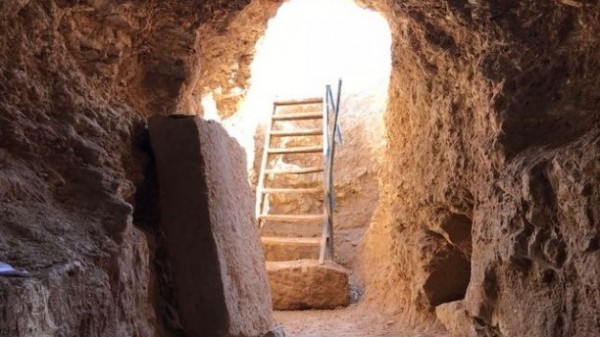
The ancient ruins date back to the first centuries of Christianity's existence. (Fox News)
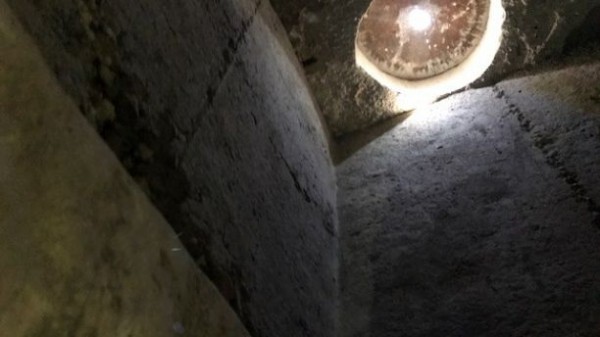
ISIS militants were unaware of the site's existence. (Fox News)
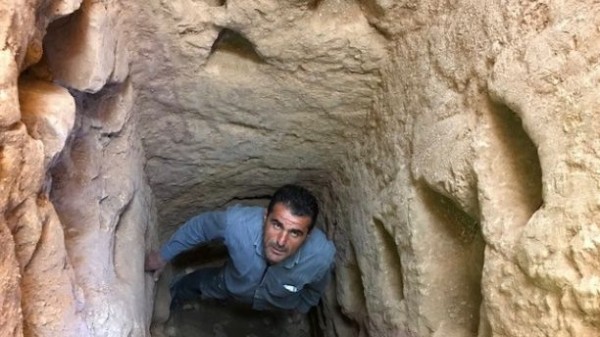
Experts are now studying the ancient Christian site. (Fox News)
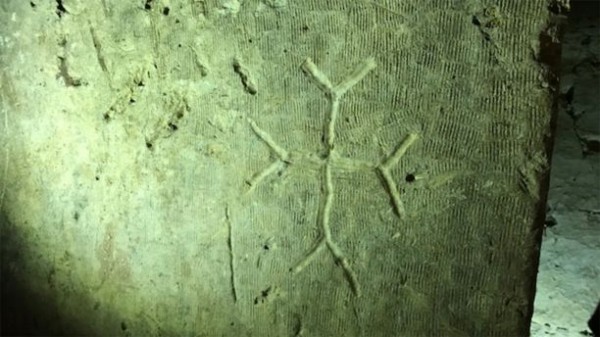
A Christian symbol carved into stone at the ancient site. (Fox News)
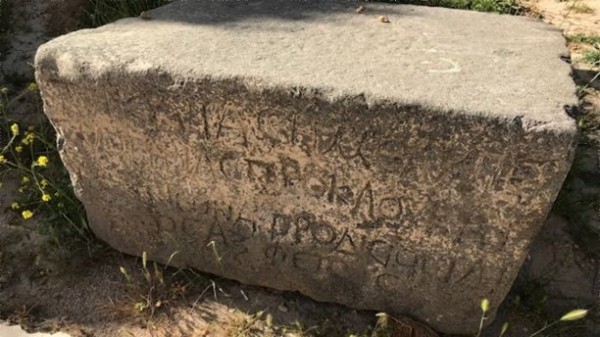
Greek writing at the ancient site. (Fox News)
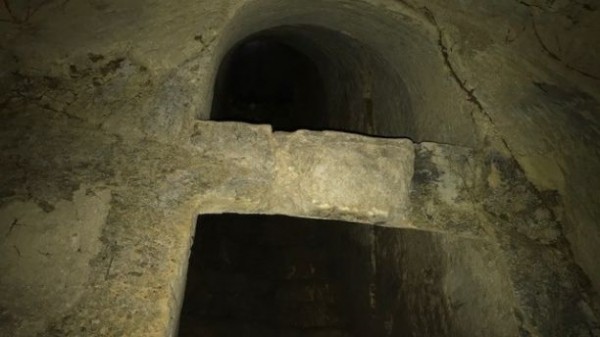
Manbij is located in northeastern Aleppo, near the Turkish border. (Fox News)
|